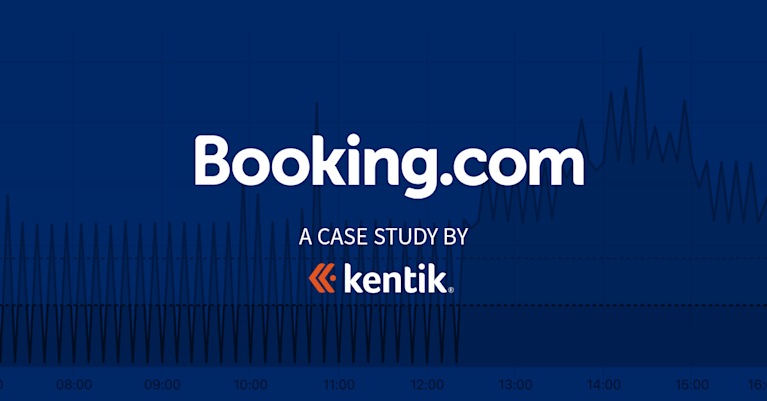Multi-cloud vs. hybrid cloud networks: What’s the difference?

Summary
In today’s digital landscape, application demands such as scalability, performance, and reliability push many IT organizations toward cloud-based networks. Learn what the best cloud solution for your enterprise needs is.
In today’s digital landscape, application demands such as scalability, performance, and reliability push many IT organizations toward cloud-based networks. Initially, cloud providers’ main offering was managed, virtualized data storage and services, or cloud computing. As cloud ecosystems have matured, so have the tools, services, and use cases available to their customers.
To get the most from cloud providers, many organizations adopt multi-cloud or hybrid cloud strategies for their IT needs.
With this article, I want to break down the differences between the major types of cloud offerings and look at what these differences mean for teams trying to decide on the best cloud solution for their network.
Public cloud vs. private cloud
The first place to start is understanding the difference between a public cloud and a private cloud. When a cloud is public, it means that its data stores and services are fully hosted and managed by the cloud provider and are accessible via the public internet.
On the other hand, a private cloud will be accessible through a private network and may be on-premises or hosted by a remote third party. Private clouds shift many management responsibilities onto the cloud consumer but offer greater degrees of security and, in some cases, performance.
What is multi-cloud?
Multi-cloud networks rely on cloud services and infrastructure from multiple cloud providers. What this looks like in a given application can vary as network or engineering demands dictate.
Benefits of multi-cloud
Not all services are created equal between cloud providers, and being able to host certain applications, data stores, CDNs, etc., with a variety of providers offers network engineers a range of benefits:
- Proximity: When performance is key, using the closest data center possible can reduce latency and costs. Pursuing a multi-cloud strategy gives you the ability to have your applications hosted in closer proximity to more end users.
- Reliability: Outages are unlikely to affect multiple providers at once. Multi-cloud networks offer greater reliability to networks that can’t afford downtime.
- Flexibility: Not every cloud provider is good at the same things. AWS might have the best pricing and performance for serverless, while your larger traffic loads have a better track record with Azure’s capacity management, but your caching performance is best with GCP…and so on.
Challenges of multi-cloud
- Complexity: The cloud is complex. The proliferation of APIs, third-party tools, and the risk for silos when handling multiple clouds within a single network exacerbates this complexity.
- Cost: Hard-to-follow cloud pricing models increased data engineering needs, and myriad opportunities for runaway billing make optimizing against costs in multi-cloud networks a full-time job.
- Management: Managing multiple cloud deployments and infrastructures often requires the formation of new personnel abstractions, like a cloud or platform team, to monitor and manage the larger network interactions.
- Security: While a boon for reliability, multi-cloud networks have an increased surface area for cyber threats and must be vigilantly monitored for vulnerabilities.
What is a hybrid cloud?
A hybrid cloud network uses both public and private clouds. As covered above, a private cloud can be a private and secure connection to a cloud provider or an on-prem data store. In both cases, the customer faces a greater degree of responsibility than with a traditional public cloud offering.
Different types of hybrid clouds
Hybrid cloud networks come in two forms, homogeneous or heterogeneous.
-
Homogeneous: Homogeneous hybrid clouds work with only one provider for all their cloud services. The entire application stack deals with only one cloud provider in this configuration.
-
Heterogeneous: In a heterogeneous hybrid cloud, private and public cloud services are delivered by various providers. The only difference between a multi-cloud and a heterogeneous hybrid cloud network is the latter’s inclusion of a private cloud.
Benefits of hybrid cloud
The stand-out benefit for hybrid clouds is security. The inclusion of private clouds offers organizations with financial, government, healthcare, or other sensitive data greater control and peace of mind around data access. For services handling large data sets or requiring application-specific hardware, hybrid clouds offer scaling and computation abilities that would be cost-prohibitive or otherwise unavailable.
Challenges of hybrid cloud
The challenges of hybrid cloud networks mirror many of the challenges of multi-cloud deployments. Namely, increased complexity, greater cloud management responsibilities, and the need for increased cost control measures. In addition to the costs associated with managing and maintaining hybrid cloud networks, the presence of private clouds requires additional CapEx costs for hardware acquisition, storage, and maintenance.
Can a hybrid cloud also be a multi-cloud?
Yes. Hybrid cloud and multi-cloud are not mutually exclusive concepts. A “heterogeneous hybrid cloud” is the same as a multi-cloud network that includes a private cloud.
The key differences between multi-cloud and hybrid cloud
| Multi-cloud | Hybrid-cloud | |
| Public cloud | Yes | Yes |
| Private cloud | No | Yes |
| Single provider | No | Maybe |
| Multiple providers | Yes | Maybe |
In terms of cost and performance, there are many factors outside the pure architectural decision to be hybrid cloud or multi-cloud that affect the financial footprint and performance of your cloud networks. Generally speaking, scale will be the most critical detail when considering cost and performance with cloud deployments. Still, prudent networking, monitoring, and optimization decisions can save organizations millions of dollars.
However, regarding reliability and security, we see some key differences between the two. Multi-cloud has a distinct reliability edge as it is extremely unlikely outages, however significant, will affect multiple cloud providers simultaneously. For critical networks, hybrid clouds that rely on a single provider are simply too vulnerable.
For security, the edge goes to hybrid clouds because of the inclusion of private clouds. This establishes tighter controls around physical access, authorization configurations, and the ability to respond should a compromise be identified.
How to choose between multi-cloud and hybrid cloud?
As we’ve seen, choosing between multi-cloud and hybrid-cloud boils down to application needs.
Does part of your application need a private cloud for security or specific hardware? Then a hybrid cloud will probably be your best solution. Should it be homogeneous or heterogeneous? A heterogeneous hybrid cloud is best if you need the engineering flexibility and greater reliability that comes from multiple providers. Can’t afford the overhead associated with the complexity of numerous providers? A homogeneous hybrid cloud might suit your organization best.
If, however, your network demands widespread availability, unshakeable reliability, and the engineering flexibility of multiple providers, a multi-cloud configuration is a way to go.
How can Kentik help?
With integrations across all cloud providers, the market’s most comprehensive network monitoring capabilities, and AI-driven insights, Kentik offers best-in-class network observability for public, private, hybrid, and multi-cloud networks, and infrastructures.



